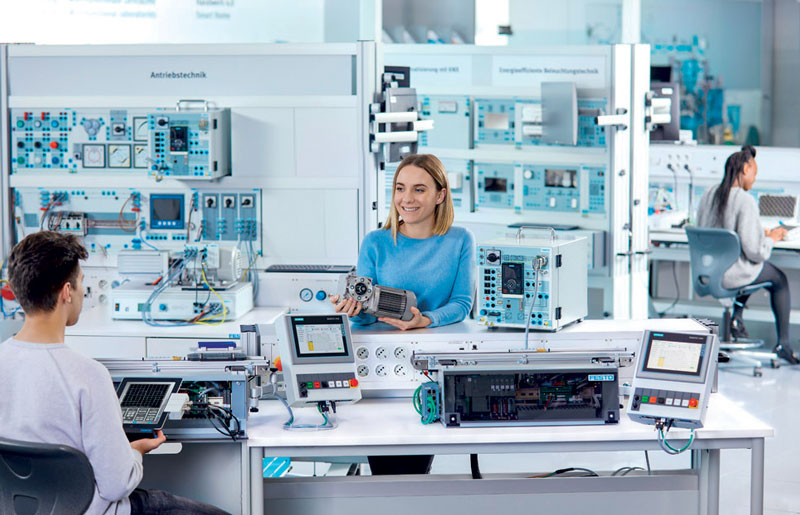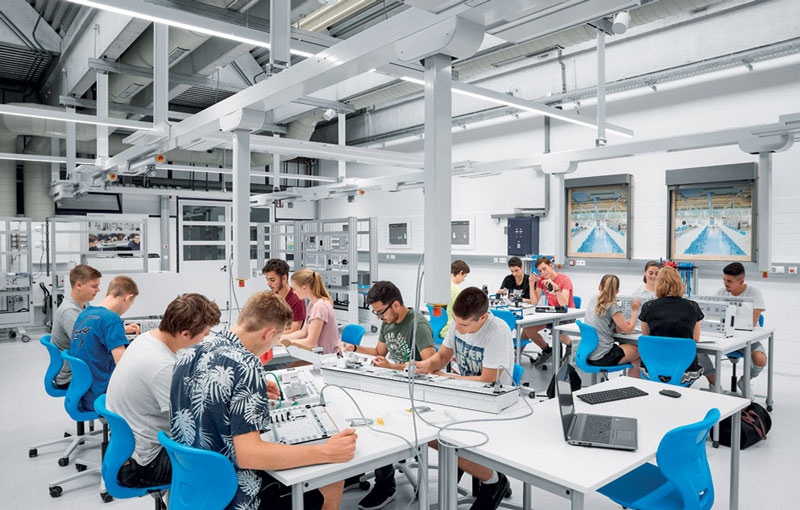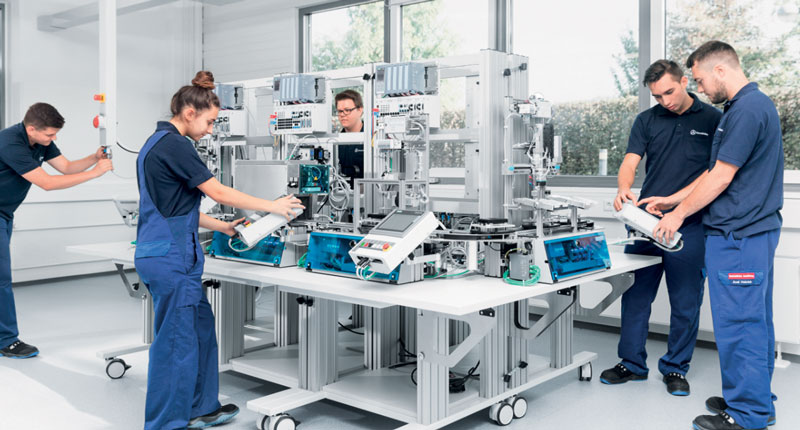Technical and professional schools and the challenge of digital technologies
It is a well-known fact that in our country there is a gap between what young people study at school and the skills needed by manufacturing companies, creating problems for both those entering the job market and those seeking personnel. What are the causes? How can students be brought closer to technology, and especially schools to the latest technology?
I would like to build on the title of an old book on technical applications, which in my secondary school days was a guide to learning the first basics of technology and physical phenomena, to introduce a topic covered almost daily by the media: the lack of technical and professional competence (skills shortage), especially in certain sectors defined as strategic for the development of our companies, such as advanced manufacturing. Small and medium-sized industries which are using, or would like to use, new digital technologies to modernise their plants and minimise production costs in order to be more competitive in a market which is no longer just national.

Why is there a shortage of skills?
The answer is by no means simple. It could be assumed that the professional education and training system in place in Italy is not fully effective in preparing the next generation of young professionals. However, while acknowledging that schools, training institutions and universities have their responsibilities, some distinctions need to be made. There are schools and institutes of excellence capable of preparing young people adequately, so as to be attractive to the labour market, and others, on the other hand, struggling to do so with results which are not always satisfactory or even poor. It is clear that success in achieving them depends on a number of variables worth noting. Among these, orientation activities play an important role, as they often consider students as potential ‘clients’ rather than directing, guiding and advising them, following their vocation.
Besides, schools do not always succeed in fostering a process of growth and training based not only on performance but also on the acquisition of skills which might enable young students to realise their ‘dreams’ in the future. It is sometimes said that today’s young people have no dreams: so the school should be able to stimulate their creativity and their search for what they would actually like to ‘do when they grow up’. This is also due to the lack of those means which could stimulate the hidden inclinations of young people, such as the use of innovative teaching tools and supports and technological laboratories where they can experiment and simulate reality. Most technical institutes are equipped with obsolete technological laboratories dating back 40-50 years, with machines that can be considered ‘museum’ items rather than a representation of reality.

How to get young people interested in technology
In the age of the Internet, digital technologies, robots, artificial intelligence, automated systems and high-speed communication networks, what is really missing is the ability to experiment, to experiment hands-on with technology, to work with computers, with robots, with machines which in some way represent reality. Some might rightly argue that schools are full of PCs, interactive whiteboards, Smart TVs and high-speed networks because the state has invested heavily in the digitisation of schools. However, this is only the starting point for the acquisition of specialised skills which require, above all, industry laboratories. For example, if we are talking about the professional profile of mechatronics, an industrial technical institute, in order to achieve satisfactory educational results, should have up-to-date mechanical, electrical, electronic and automation laboratories in line with the new digital technologies. It is with the right laboratory facilities that the technicians of the future are prepared. There are no other alternatives. All this would also have a positive impact on the age-old question of teacher training, as they would have access to a technological environment full of opportunities to enrich their lessons and exercises. Lastly, with technological equipment in line with the digital technologies underlying the Industry 4.0 platform, the school could independently implement an ‘on site’ school-to-work alternation programme, also by means of exchanges between classes in neighbouring schools,using the laboratories as ‘training gyms’ capable of replicating real company scenarios. These experiences are not difficult to implement.
Festo, for example, thanks to regional funding from the IFS (Impresa Formativa Simulata – Simulated Training Enterprise) program, has set up a series of experiential courses in several technical institutes in Lombardy, where students in the final classes have worked in “role playing” for a week in a simulated factory, solving a complex technical problem. In this case it was found that the laboratory support made available, the competition created between the working groups, the experiential activities carried out on PLCs, sensors and actuators, constituted a very powerful stimulus in motivating even those students who seemed completely uninterested in the world of technology. The success was such that, even in the absence of further funding, the training experience was offered again as it was requested by the students’ families.
In order to draw attention to the delicate and crucial issue of acquiring the right skills, Festo, within AIdAM, has been proposing for years an awareness-raising process addressed to the schools of the M2A network, and subsequently to all Italian technical and professional institutes. The educational solutions proposed are models reproducing real factory scenarios where pupils can apply their knowledge, observe the behaviour of technology, experiment with it, even making mistakes, and finally learn and acquire new knowledge: ‘I observe, experiment and learn’.

